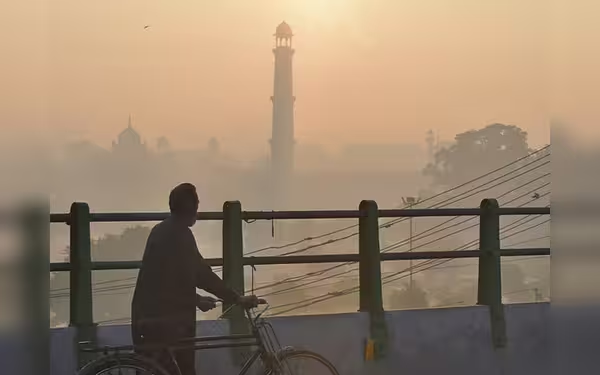Thursday, November 21, 2024 10:15 AM
Punjab Smog Crisis: Government Takes Action Against Polluting Vehicles
- Punjab faces severe smog crisis during winter months.
- Authorities seize 25 trucks for violating pollution regulations.
- Health risks from smog affect vulnerable populations.
 Image Credits: tribune.com.pk
Image Credits: tribune.com.pkPunjab's smog crisis worsens as government seizes polluting vehicles to improve air quality and protect public health.
The issue of smog in Punjab has become a pressing concern, particularly during the winter months when air quality deteriorates significantly. This environmental crisis is primarily caused by a combination of factors, including vehicle emissions, industrial pollution, and crop burning. As the air thickens with harmful particles, residents are left to grapple with health issues and reduced visibility. The government has recognized the urgency of the situation and is taking steps to address the problem.
In a bid to curb the smog that has enveloped the region, authorities have implemented strict measures against large smoke-emitting vehicles. This includes a ban on trucks and other heavy vehicles that contribute significantly to air pollution. As part of this crackdown, 25 trucks have already been seized for violating the regulations. The focus is on vehicles that emit excessive smoke, are in poor condition, or lack the necessary fitness certificates to operate on the roads.
These measures are crucial, as the health of the population is at stake. Smog can lead to serious respiratory issues, and vulnerable groups such as children and the elderly are particularly at risk. By targeting the most polluting vehicles, the government aims to improve air quality and protect the health of its citizens.
However, while these actions are a step in the right direction, they may not be enough to solve the problem entirely. The smog crisis is multifaceted, requiring a comprehensive approach that includes stricter regulations on industrial emissions, better public transportation options, and public awareness campaigns about the importance of reducing pollution. It is essential for the community to come together and support these initiatives, as cleaner air benefits everyone.
The fight against smog in Punjab is ongoing, and while the recent measures to restrict smoke-emitting vehicles are commendable, they represent just one piece of a larger puzzle. It is imperative for both the government and the public to remain vigilant and proactive in addressing this environmental challenge. Only through collective effort can we hope to breathe easier and ensure a healthier future for all.













